I’ve been to a couple national parks to do some serious nature and landscape photography but never have I ventured above the 10,000ft mark into the mountains to take pictures. Being above 10,000ft for the first time, having never previously gone above even 6,500ft, was a bigger shock to the system than I realized it would be. Even though I made it through, the experience left me in doubt about doing photography on hikes, and it certainly left me wondering how much gear and what quality of gear is really the best choice for such an extreme environment.
Where I spend most of my days in the midwestern United States is a mere 600ft above sea level. Not high enough to notice much of a reduction in oxygen levels compared to sea level. So when we flew into Denver and then drove up to our hotel in Estes Park, Colorado, my body didn’t have a lot of time to adjust to the sudden 7,000ft or more change in elevation. The whole city of Estes Park sits right around 7,500 feet high, which corresponds to approximately 76% of “sea level” oxygen. However, we spent most of our time in Colorado even higher than that in our lodge which was closer to 8,000 ft. It may not seem like much, but when you’re pushing 10,000ft of elevation, every couple hundred feet causes a noticeable decrease in physical capability. At these elevations I was basically at the limit for “normal” people who don’t spend all day in the mountains and every bit higher I went stressed my body more and more.
Just driving into Rocky Mountain National Park to do some of the more popular trails at Bear Lake Trailhead took me all the way up to 9,475ft of elevation! This corresponds to about 70% of “sea level” oxygen. Starting off every hike with 30% of your oxygen missing from the air was tough to deal with but I was able to do it. On top of that, every hike from this trailhead goes up, higher and higher into the mountains.
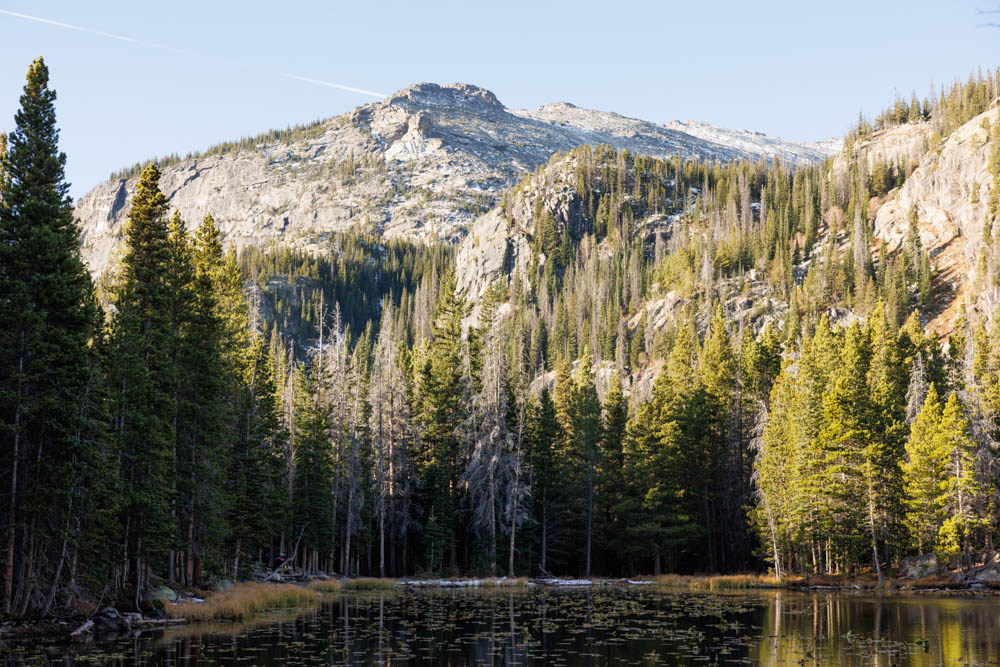
Nymph Lake on the way up to Dream Lake from the Bear Lake trailhead.
The main thing we were dealing with was shortness of breath, which was a little scary but not scary at the same time. My girlfriend and I where dealing with this to varying degrees so we tended to stop more frequently so one or the other could catch their breath. While it is frustrating that even a little bit of exertion had us breathing like we’d just sprinted the last 100 ft, the upside is that our bodies didn’t feel as if we had sprinted. In the end, just stopping and standing to catch our breathe for a few minutes every so often was enough to make it up the mountain. It doesn’t mean it was easy, but it was doable and we can officially claim “we made it”.
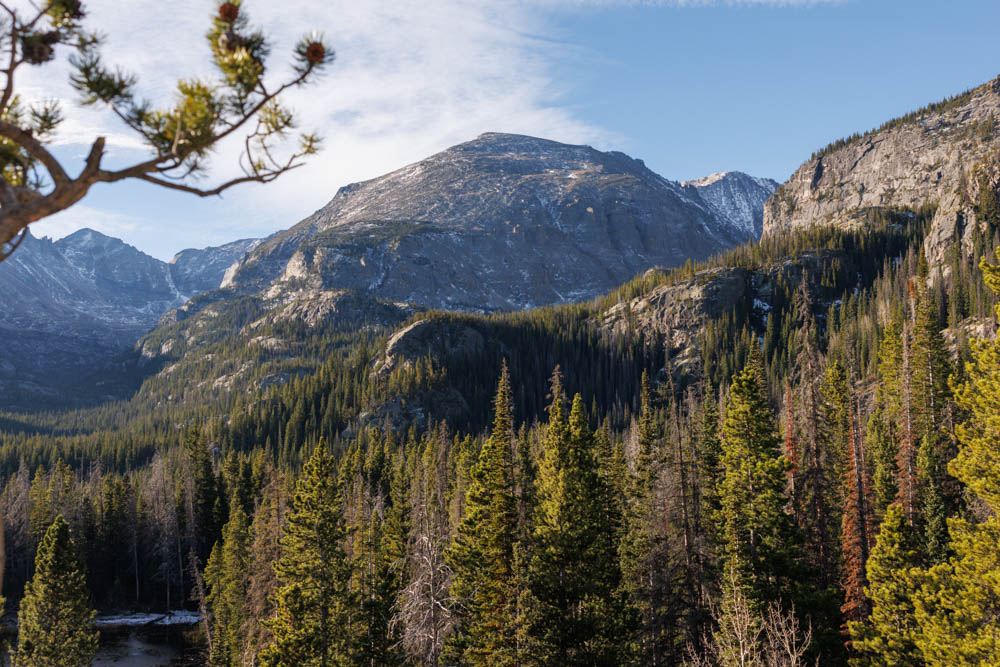
View from the trail going up to Dream Lake and Lake Haiyaha after Nymph Lake.
To give you an idea, while were stopping and taking pictures along the way (a good excuse to go up the mountain slower), we only spent about 4 hours of our total 6hr and 20 minute hike actually moving. In total we spent about 36% of our time resting or just standing around taking pictures. Even with that amount of rest we honestly felt like we’d nearly burned ourselves out on this first hike, it was a hard slog overall. I think if we were going to do it again I would go even slower and restrict what I was doing even more. The one good call we made was to skip going up the trail to another lake at the end of our hike, thankfully I recognized that we were all out of energy and called it a day.
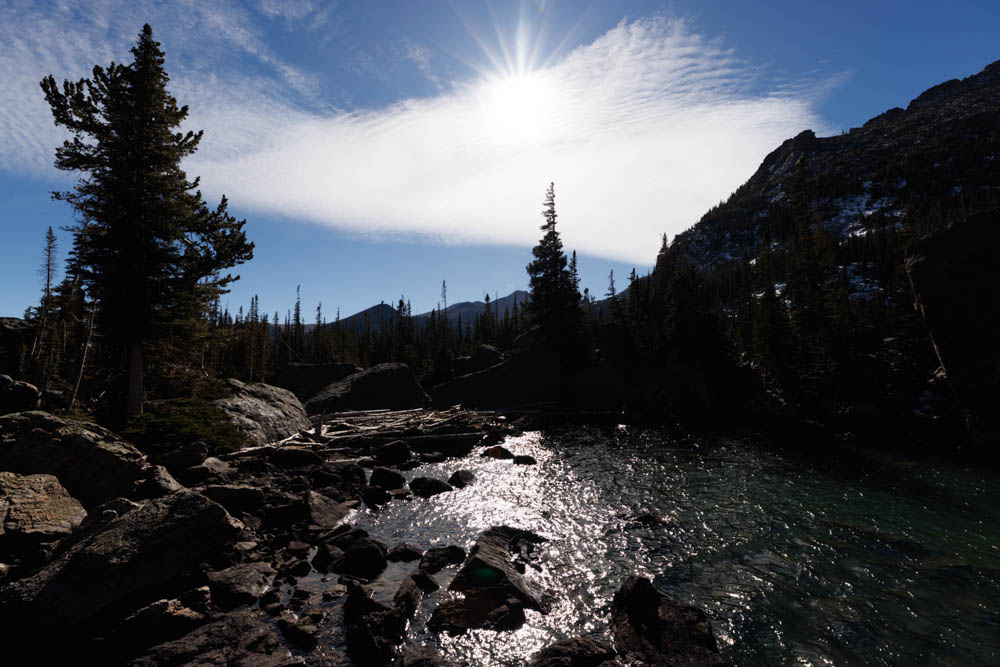
SDR photo of Lake Haiyaha showing the exposure require to capture the clouds when over 10,000 feet of elevation..
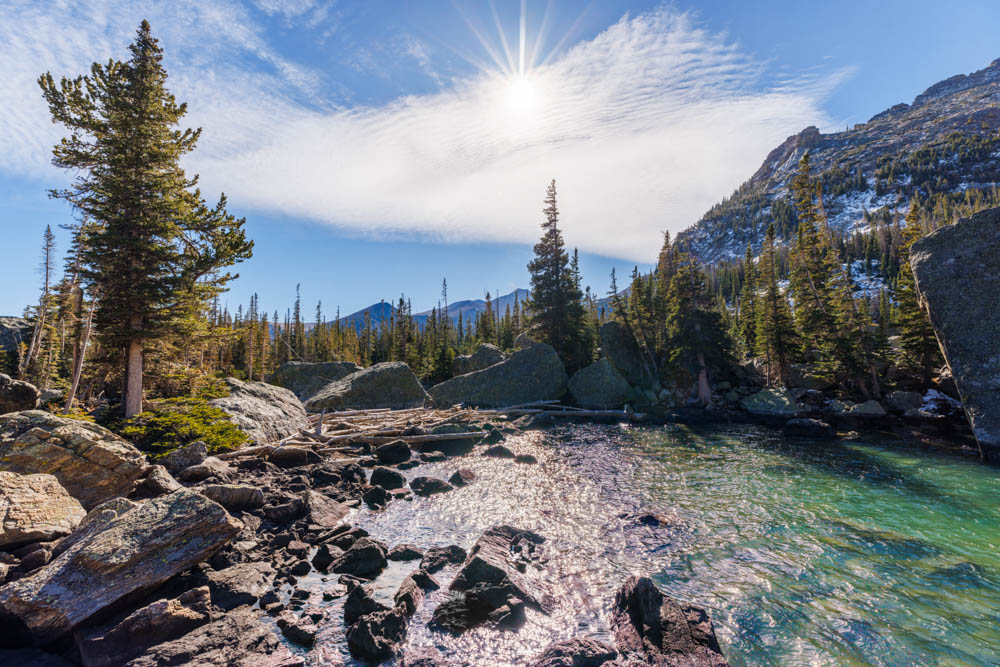
Lake Haiyaha in HDR. It's so bright in the mountains that even with the sun partially obscured by some clouds in this shot, the 14.7 stops of DR on the R5 don't quite capture the whole scene. HDR was required whenever the scene was backlit by the intense mountain sun.
What I learned from the first hike was simple, the less you have to carry with you, the better your hike in the mountains will go. Believe it or not I completed this hike up to a maximum elevation of around 10,378ft (measured by GPS) carrying an R5 with grip, 4 batteries, and 3 lenses in my bag. The extra weight definitely contributed to my fatigue on this hike but I was determined to make the most of this hike by taking all the lenses I thought I might need for every conceivable subject matter.
As tough as that was, 4 days later we would do an even more difficult hike on an even longer route up to a lake aptly named “Sky Pond”. Initially we weren’t even sure we would do Sky Pond after the first day because it seemed like it was too far and too high up for us to manage. But, on a day when we intended to do a much more conservative and easy hike we made the rash decision to go all the way up to Sky Pond instead.
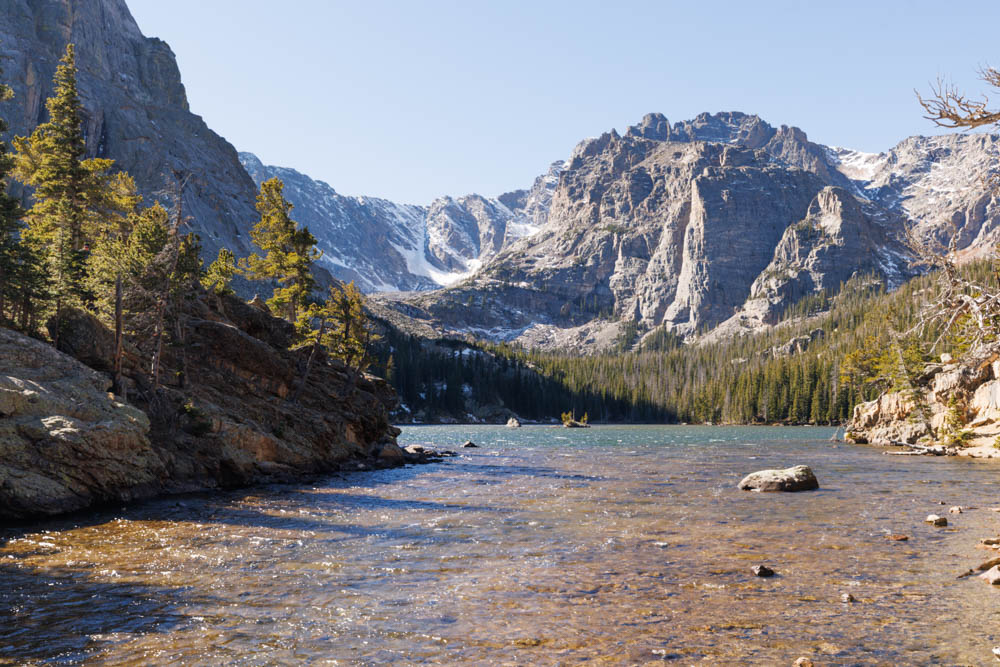
The Loch, one of the prettiest lakes that can be hiked to from the Glacier Gorge Trailhead on the way up to Sky Pond (if you choose to hike that far).
When I said that every few hundred feet of elevation matter in the mountains I wasn’t kidding. The difference between the first day’s hike up to a max of 10,378ft, and Sky Pond which culminated with me standing at 10,928ft was huge. On this hike I made the decision to leave behind my RF 28-70mm f/2 L which weighs over 3lbs. As much as I wanted that lens, and I wish I could have taken it, I knew I wasn’t going to make the easier route we had planned initially with that in my bag, much less a longer hike to Sky Pond. I ended up being 100% correct on that because I literally had nothing left in the tank by the end of this hike.
The difference in elevation between 10,378ft, and 10,928ft, for me, was like night and day. Once we were above maybe 10,700ft everything got more difficult of course, but it wasn’t like before, now if I pushed myself even a little I would actually feel dizzy. Any kind of strain such as bending down to take a picture then standing up again would result in a lightheaded feeling. Jumping up one or two steps in a row would have me breathing hard. If I didn’t take the most measured and careful approach, every single step of the way, I would feel the effects of my actions immediately afterward. I had a few moments where I realized that if I passed out, I might fall over the edge and roll down the mountain.
Needless to say I became very focused on just taking the next step, taking pictures started to seem like it was secondary to staying safe and alert on the mountain. At one point we had to scramble up some rocks to make it to the final stretch up to Sky Pond. In order to do that I had to decide to put my camera in my bag and leave it there. There was no messing around on this section of trail, with loose rocks and ice all around us on a near vertical climb up treacherous rocks with our senses dulled by the ever decreasing levels of oxygen. I had to put 100% of my mental energy into just making the climb.
The sign says Sky Pond is up over these rocks somewhere.... yikes!
Once we got over the rock scramble it was like being in a dream. I was dazed and confused but I was still making it one step at a time. I felt that I could finish the hike to Sky Pond and we pushed through and made it. But when I got there, I barely took any pictures at all, and had a large number of blurry shots. Somehow, despite the intense daylight, I had managed to set too low of a shutter speed and ended up messing up some pictures. Something in me was telling me to try and find a cool spot for some pictures but my body and brain could barely figure out how to make that happen. Now over 10,900ft, there wasn’t much I could do except spot a rocky knoll that I could hike up to and take a picture from, then call it a day. And that’s pretty much what I did.
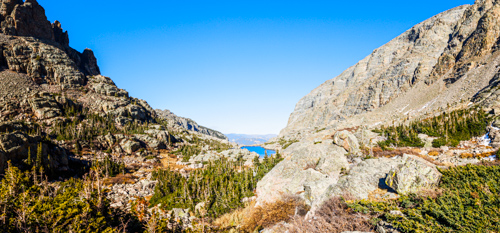
Looks like a pond touching the sky don't it?
After we finished up at Sky Pond we had to hurry back across 5 miles of mountain trails before it got dark. It ended up being that the hike back was 10 times more miserable than the hike up. Along the way we contemplated going to sleep in a bed of pine needles. We thought, maybe we can use our emergency blankets and just sleep up there till the morning. Yeah, doesn’t sound too smart in retrospect when the Rockies are known to have storms kick up out of nowhere. We kept walking, but I ended up having to give my backpack to my girlfriend, Kate, who carried it the rest of the way down the hill, and I took her much lighter bag. I managed to emerge from the trail into the parking lot about 2.5 hours after reaching Sky Pond, feeling very, very tired. I knew it would be a difficult hike for us because we weren’t adjusted to the elevation and we aren’t very experienced hikers, and it was every bit as difficult as I thought it would be.
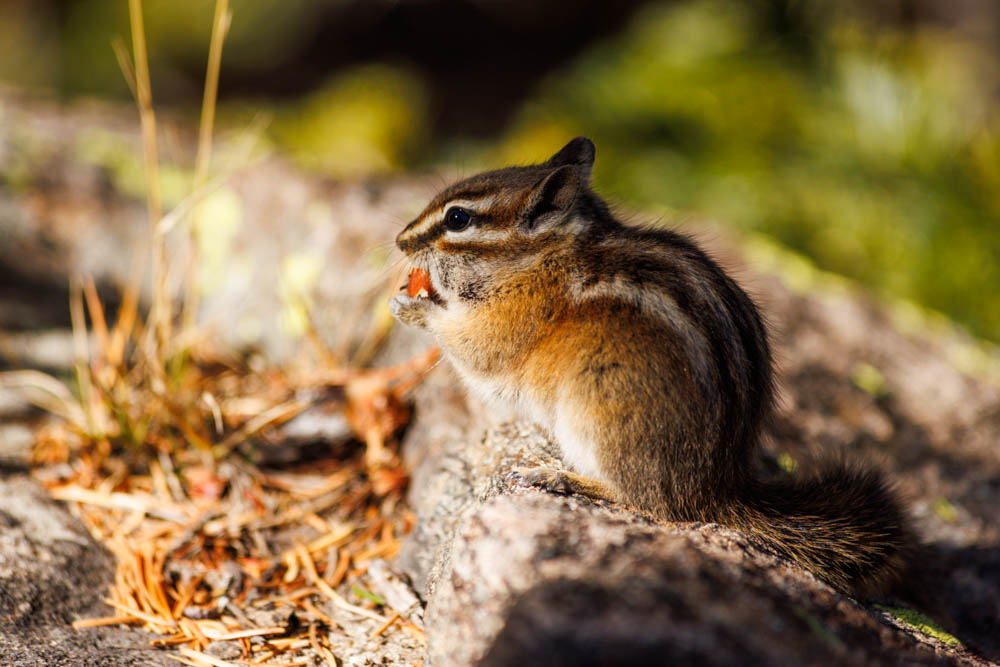
There's lots of these little chipmunks running around on the trail in addition to Pika and birds. They obviously get fed a lot even if hiker's are technically not supposed to feed them.
So what did I learn about photography from all this? I learned that every action seems like an impediment when you’ve been hiking up a mountain for the last 5 hours in thin air. Weight and complexity are the enemies of good photography at these elevations. We might have been better off taking 1 cheap and lightweight zoom than my heavy L lenses. I used to think weight was kind of a negligible aspect of my gear, but if I ever do mountain trail photography again, reducing weight will be #1 in my mind. I’ll probably take my R5 without the grip and still pack 4 batteries, but I’ll pick just 1 lens to take with me on a hike.
On a side note, I kind of feel like Canon could introduce something for people who want maximum portability, maximum image quality, and maximum zoom range. Even if it is a variable aperture lens, what is the problem with that? I would love a 24-120mm with L quality optics even it had a variable f/4-f/5.6 aperture. I think a lot of hikers would appreciate having L weather sealing and image quality, while avoiding the large and heavy nature of L zooms we’ve become accustomed to. Canon has put the red ring on variable aperture lenses in the past, I think they should make a 24-120 L with a variable aperture specifically for hiking.
The bottom line is that if getting up the trail is so difficult that you can’t think anymore, then the quality of your gear will be meaningless to you. On top of that, there are unique challenges to shooting at this elevation, one of the major ones is the intensity of the sunlight. This is where taking that L lens might help a little as getting the sun in frame will push camera and lens to their limits. L lenses are better at maintaining good contrast when the sun is in frame. I still ended up having to photoshop out some little rainbow spots but for the most part the L lenses performed well in the extremely bright conditions. Even so, when it comes to those epic hikes going above 11,000 feet, I’d be inclined to lighten the load as much as possible, maybe to the point of leaving the heavy L lenses at home.
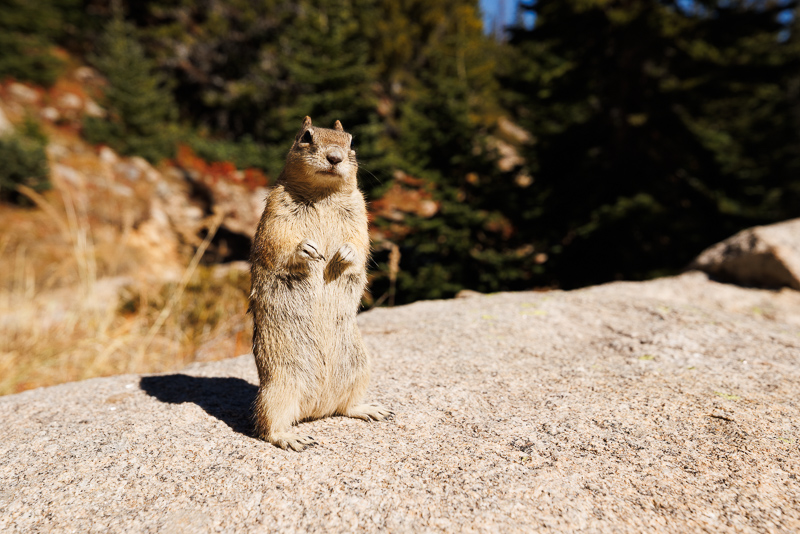
Say bye, bye to our dear readers Mr. Ground Squirrel.
I think we both really enjoyed our trip to Rocky Mountain National Park, we experienced a lot and learned a lot about doing nature photography in some of the harsher environments on our planet. Thanks for reading along and feel free to share any comments you have about your own hiking experiences.

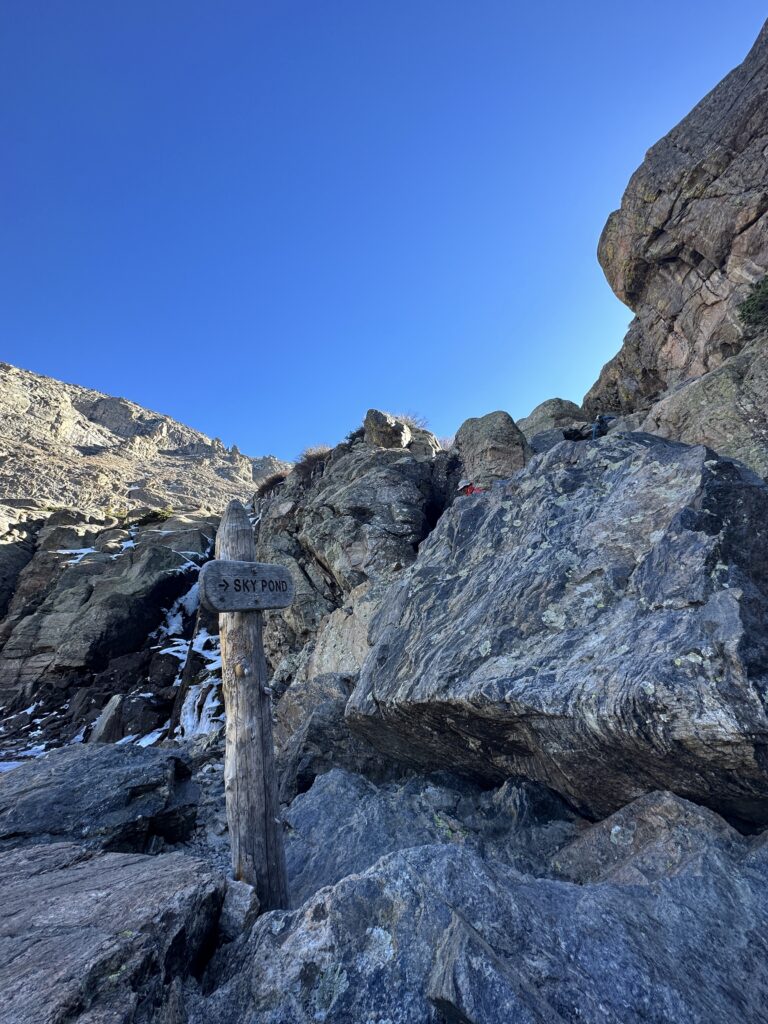
1 Comment
Even if it is a variable aperture lens, what is the problem with that?